ROOM: The Space magazine is one of the prominent magazines on space exploration, technology and industry. At ROOM, we share a common dream – promotion of peaceful space exploration for the benefit of humankind, all while bringing you detailed articles on a plethora of trending topics. Our authors include academics and industry leaders from all over the world, which lets us bring you the most up-to-date and detailed information about kepler telescope exoplanet discovery.
 August 2018
Exoplanet census promises radical discoveries
August 2018
Exoplanet census promises radical discoveries
...the first exoplanet discovery (by Swiss astronomers, Michel Mayor and Didier Queloz) of a half-Jupiter-mass planet orbiting the star 51 Pegasi on a four-day orbit to the remarkable discoveries of NASA’s Kepler space telescope, progress ...has been rapid and surprising. The vast majority of the more than 3,700 known exoplanets are unlike any of the planets in ...
 April 2019
Scanning the skies for exoplanets
April 2019
Scanning the skies for exoplanets
...space agency has ever sent into space, Kepler. During its lifetime, Kepler observed an astonishing 530,506 stars and found over 2660 exoplanets. Its discoveries revolutionised the field of exoplanet studies as it revealed a plethora of ...captured 100 short-lived changes; six of these were supernovas picked up by TESS before ground-based telescopes had a chance to detect the ultra-luminous outpourings of light typical of these exploding stars. With...
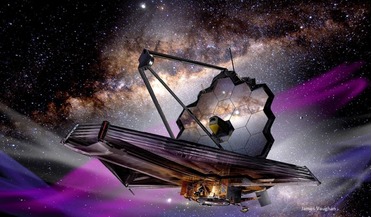 May 2022
Essential guide to the James Webb Space Telescope
May 2022
Essential guide to the James Webb Space Telescope
... selecting an infrared space telescope comes from our recent advances in the field of exoplanets; worlds orbiting other stars. With over 5000 known exoplanets, we are progressing from the Era of Discovery to the Era of ...simultaneously, greatly enhancing the amount of science the telescope can perform. First year of science With over 5000 known exoplanets, we are progressing from the Era of Discovery to the Era of Understanding, ready to ...
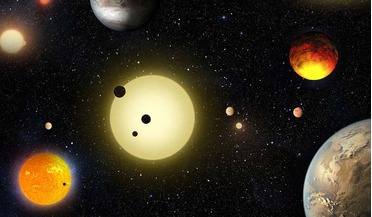 11 May 2016
Kepler scientists announce a major increase in confirmed exoplanet numbers
11 May 2016
Kepler scientists announce a major increase in confirmed exoplanet numbers
...for their authenticity on a case by case situation, that includes detailed follow up observations by ground telescopes. However, these detailed follow up observations are very time and resource consuming. To overcome this, ...even though at this stage they cannot be claimed as true exoplanet discoveries. In this latest announcement, Kepler scientists have doubled the number of known exoplanets smaller than the size of Neptune in our own Solar System...
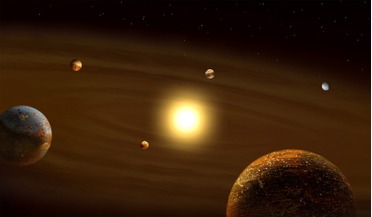 27 July 2019
Hundreds of new planet candidates detected by Kepler
27 July 2019
Hundreds of new planet candidates detected by Kepler
...as this news is, TESS is not the only one making substantial discoveries. Although now officially retired, NASA’s first formidable exoplanet telescope – Kepler – has gone one better. Make that a few hundred better. ... to its new stellar target, Kepler had racked up its 1,000th confirmed exoplanet discovery. Kepler’s K2 mission comprised of 19 ‘campaigns,’ lasting around 80 days each. These new discoveries were all extracted from data collected...
 October 2019
Are we prepared for SETI discovery?
October 2019
Are we prepared for SETI discovery?
...-professional citizen scientists or even machine intelligence in the search. Since the same databases (Kepler space telescope data in particular) are also used to look for promising astrobiology sites, the two ...within different cultures and societies. It is also the case that people’s reaction to the announcement of a discovery of extraterrestrial life or technology will be very different depending on their age, gender, education, religion, etc....
 November 2018
How many people does it take to colonise an exoplanet?
November 2018
How many people does it take to colonise an exoplanet?
... us who want to actually visit in person, the recent discovery of Proxima Centauri b gives some cause for optimism. Orbiting the nearest star to the Sun, this is the closest exoplanet we can find. It is likely to be a rocky ...of Sciences in Prague. He specialises in radio astronomy and spent two years at the Arecibo radio telescope in Puerto Rico. His main scientific interest is galaxy evolution, particularly galaxies which contain large amounts of...
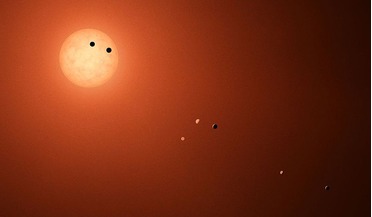 19 May 2017
Exoplanets galore and possibly the next Trappist-1 system?
19 May 2017
Exoplanets galore and possibly the next Trappist-1 system?
It has been a good month for announcing exoplanet discoveries, as two separate teams using the same instrument have found 20 super-Earth to Neptune-mass planets in one ... is the HARPS spectrograph located on the ESO 3.6 metre telescope at La Silla Observatory, Chile and both teams utilised the HARPS Guaranteed Time Observation list to search for the exoplanets. HARPS itself stands for the High Accuracy...
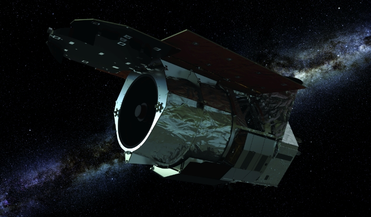 20 March 2019
Webb telescope partly blamed for WFIRST funding cut
20 March 2019
Webb telescope partly blamed for WFIRST funding cut
... its development. No science or technology roadblocks. Just a decision not to fund,” he wrote, pointing out that the telescope is “on schedule to an on budget launch. All of the technologies are ready to go.” Designed with the sensitivity of...Spergel continued. Dark energy is the term scientists have come up with to try to explain the discovery that the universe is expanding faster and faster. WFIRST topped the U.S. National Academies of Sciences, ...